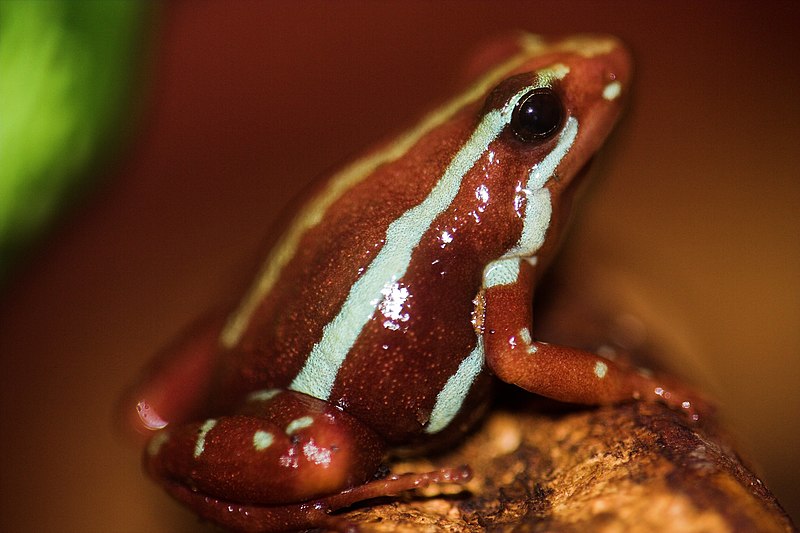Photo by I, Luc Viatour via Wikimedia Commons
Survival often hinges on the cunning and brutality of predators. From the depths of the oceans to the towering canopies of rainforests, an array of creatures have evolved the most astonishingly sadistic methods to secure their next meal. Delving into the realm where nature’s dark artistry meets the primal struggle for existence, this article unveils the spine-chilling world of animals that have honed their hunting techniques to a sinister perfection. Embark on a journey that navigates the shadows of the animal kingdom, where every calculated move and ruthless maneuver serves as a chilling reminder of the unforgiving laws that govern life and death.
1. Komodo Dragon
Komodo dragons, the largest living lizards on Earth, employ a vicious hunting strategy. Found mainly on remote Indonesian islands, these “land crocodiles” hunt in packs – charging and targeting their prey’s throat or underside with their razor-sharp claws and jagged teeth, causing rapid blood loss or fatal lacerations. Despite their initial charge, Komodo dragons might not finish the job right away. Instead, they severely wound the prey before tearing off flesh and consuming their victim alive. It’s also been proven that their mouths contain venom to make their attacks more lethal.
2. Hagfish
When threatened by predators, hagfish deploy an unexpected yet effective defense mechanism. They eject jets of slime into the mouths of attackers, causing predators like sharks and wreckfish to choke and gag. This slimy secretion discourages predators from consuming them, allowing hagfish to escape potential danger.
3. Poison Dart Frog
The poison dart frog employs a unique method of defense, deriving its name from indigenous people using its toxic secretions to poison blowgun darts. The frog’s skin secretes potent neurotoxins, acting as a chemical weapon that deters predators. This vibrant amphibian’s beautiful appearance serves as a warning sign, telling predators to stay away due to its toxic nature.

4. Cheetah
Cheetahs are known for their incredible speed, but their hunting technique is equally fascinating. They have perfected the art of speed and stealth, using their exceptional acceleration to sprint and quickly close the gap between them and their prey. Their acceleration is so impressive that they can go from 0 to 60 mph in just a few seconds, allowing them to outrun their prey in short bursts.
5. Feral Swine
Feral swine, also known as wild boars or hogs, are invasive species in the United States. They have caused havoc by disrupting ecosystems and destroying native plants. Feral swine are omnivores and opportunistic feeders, capable of hunting small animals, consuming their eggs, and even preying on young or weak animals. This behavior contributes to their detrimental impact on local ecosystems.
6. Cooperative Hunting: Coyotes and Badgers
Cooperative hunting can involve different species working together to catch prey. Coyotes and badgers have been observed collaborating in hunting ground squirrels. Badgers chase the squirrels underground, while coyotes wait at burrow entrances to block escape routes. This joint strategy increases their hunting success and demonstrates the intricacies of interspecies cooperation in the wild.
READ MORE: Nature’s Oddballs: A Glimpse Into the World’s Strangest Looking Creatures
7. African Lion
Lions are social predators and hunt in groups. They often form prides consisting of several related females and their offspring, which work together to bring down larger prey. Their cooperative hunting involves strategic positioning and synchronized attacks to overwhelm and subdue their chosen target. This strategy increases their chances of success and ensures a consistent food source for the pride.
8. Spitting Spider
The spitting spider has developed a peculiar and effective method of capturing its prey. This spider doesn’t rely on building webs but rather spits venom-laden silk at its victims from a distance. The silk acts like a glue, immobilizing the prey and allowing the spider to approach and consume it at its leisure. This method eliminates the need for close physical contact and minimizes the risk of retaliation.
9. Cone Snail
The cone snail employs a deadly hunting technique involving venomous harpoons. These marine snails use a specialized radula tooth, loaded with venom, to harpoon their prey. The venom rapidly immobilizes the target, making it easier for the cone snail to engulf its victim whole. Interestingly, some cone snail venoms have potential medical applications in pain management.
10. Assassin Bug
The assassin bug showcases a gruesome hunting method. It preys on other insects by piercing them with a specialized mouthpart called a rostrum. The assassin bug injects a paralyzing venom that liquefies the prey’s insides, allowing the bug to suck up the nutrient-rich fluid. This method ensures the assassin bug can feed on its prey without any resistance.
11. Mantis Shrimp
These ocean dwellers have one of the fastest and most powerful strikes in the world. They use specialized limbs to deliver a lightning-fast punch that can crack open shells and break the defenses of their prey, such as crabs and snails. Their strike is so powerful that it creates a cavitation bubble, which generates heat and light as it collapses, stunning or even killing their prey instantly.
12. Ogre-Faced Spider
The ogre-faced spider uses a unique hunting technique. It weaves a silk net between its front legs, which it holds between its chelicerae. When it senses vibrations from potential prey, it lunges forward, casting the net over the victim. This remarkable ambush strategy helps the spider catch flying insects.
13. Surinam Toad
The Surinam toad employs a bizarre method to catch its prey. It lies in wait at the bottom of water bodies, burying itself in the mud with its eyes and nostrils exposed. When a small aquatic animal swims by, the toad suddenly inflates its body, creating a vacuum that sucks the prey into its mouth.

14. Velvet Worm
Velvet worms use a glue-like substance to capture their prey. They shoot a stream of adhesive from specialized glands, ensnaring insects or other small animals. The prey becomes immobilized, and the velvet worm leisurely approaches to feed.
15. Humpback Whale
Humpback whales use a method called bubble-net feeding to catch their prey, mainly small fish like herring. They work together to blow a circular ring of bubbles around a school of fish, creating a “net” that keeps the fish trapped. The whales then swim through the center, mouths agape, and feast on the confined prey.
16. Archerfish
Archerfish have a unique method of hunting terrestrial insects. They shoot jets of water at insects perched above the water’s surface, knocking them into the water, where the archerfish can easily consume them.
17. Trapdoor Spider
The trapdoor spider constructs a camouflaged burrow with a hinged lid. It hides inside and waits for unsuspecting prey to wander by. When the prey comes close, the spider lunges out, grabs the prey, and drags it into its burrow.
18. Parasitoid Wasp
Parasitoid wasps lay their eggs inside or on the bodies of other insects. The wasp larvae then feed on the paralyzed or living host, eventually consuming it from the inside out. This method ensures a constant food source for the developing wasp larvae.
19. Praying Mantis
The praying mantis is an adept and stealthy predator, renowned for its unique hunting methods. Its name derives from its iconic stance, with forelegs folded as if in prayer, but these forelegs are specialized for swift and deadly capture. Equipped with spikes, they are used to snare and clutch unsuspecting prey. The mantis is a master of camouflage, blending seamlessly into its surroundings, which allows it to lie in ambush and strike when a prey item comes close. With lightning-fast reflexes, it grabs its victim, often consuming it head-first. To further enhance its predatory capabilities, the praying mantis possesses a highly flexible triangular head that can rotate 180 degrees, giving it an expansive field of view with its large, well-developed eyes. This combination of stealth, speed, and specialized anatomy makes the praying mantis a formidable hunter in the insect world.
In the intricate world of predation, these animals have evolved remarkable and often peculiar techniques to catch and consume their prey. From swift speed to venomous adaptations, each method highlights the incredible diversity and complexity of nature’s strategies for survival.




